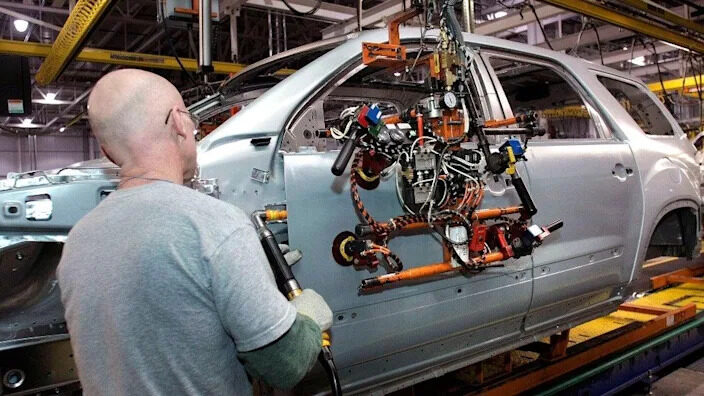The producer price index (PPI) for final demand, which tracks prices charged for goods and services that are not a part of other products, rose nearly 10 percent last year as a sharp economic rebound strained supply chains. The increase marks the fastest annual jump in the PPI since the Labor Department began compiling the data in 2010.
Even so, the PPI rose just 0.2 percent in December on a seasonally adjusted basis. Economists expected the PPI to increase 0.4 percent last month after a 1 percent jump in November. The PPI for final demand minus food, energy and trade services, also known as "core PPI," rose 0.4 percent in December, in line with economists' expectations.
"Despite annual figures that are tracking at historic highs, moderation in the monthly data supports our view that producer prices will gradually descend as 2022 progresses, especially in the second half of the year," wrote Mahir Rasheed, U.S. economist at Oxford Economics, in a Thursday analysis.Both consumer and producer prices rose rapidly in 2021 as an unexpectedly swift economic recovery overwhelmed suppliers still struggling to rebound from the pandemic. Many manufacturers, suppliers, shippers and retailers have been unable to keep up with surging demand due to pandemic-related hiring and supply issues.
While the slowdown in producer price growth is a welcome sign, it remains unclear when inflation in consumer in prices will finally begin to cool. Consumer prices grew 7 percent in 2021, according to data released Wednesday by the Labor Department, the fastest annual rate since 1982.
Some economists have cited improvements in industrial production and delivery times as signals of further progress toward unsnarling supply chains. The Federal Reserve is also expected to begin raising interest rates as soon as March in a bid to slow inflation down.
"Investors are looking for signs of moderation in supply chain disruptions, as declining input costs would ultimately signal an easing of the consumer's price burdens. This could help clarify the extent of the Fed's mission to raise rates in 2022 and beyond," said John Lynch, chief investment officer for Comerica Wealth Management.




Comment: While the PTB played fake pandemic, trying to gain total control of every aspect of out lives and their attempt to install totalitarian rule over the whole planet, they disrupted the main supply chains.
The only gains from the insane anti-corona fascistic measures is the people's mental health and impending economic dissaster.
Have they done it on purpose, or it is a symptom of a rotten and faulty system by design that is rapidly dying?
See also: